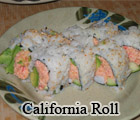
With a history of more than 2,500 years, the ancient city of Suzhou, boasting splendid scenery, rich cultural heritage and abundant agricultural products. Ever since the founding of Suzhou as the capital of the Wu Kingdom in 514 B.C., it has been the political, economic and cultural center of the region.As a place famed for its well-known scholars, successful merchants, great architects and distinguished artists, Suzhou provides favorable conditions for the creation and development of classical gardens.
The earliest gardens of Suzhou, which belonged to the King of Wu, can be traced far back to the Spring and Autumn period in the 6th century B.C. The Pijiang Garden was recorded as the earliest private garden-house dating from the 4th century Eastern Jin Dynasties. More gardens were built in the centuries that followed. During the prosperous Ming and Qing Dynasties, from the 16th to the 18th centuries that followed, Suzhou saw a booming economy. Consequently, the number of gardens in the city of Suzhou and its environs increased a great deal, mounting to 200 odd. Dozens of them have survived to the present and are kept in a good state of preservation.With their numerical superiority and artistic perfection, the classical gardens of Suzhou has had a good reputation in this part of China, popularly known as “the earthly paradise”.
Laid out within a limited area by the house, a classical garden of Suzhou is a microcosm of the world made of the basic elements of water, stones, plants and different kinds of buildings with literary allusions. Like a freehand brushwork in traditional Chinese painting, it is the creation of “urban scenery” or an amicable environment that brings man into harmony with nature. Built in a period when privately-owned gardens were most flourishing, the Humble Administrator's Garden, the Lingering Garden, the Master-of-Nets Garden and the Mountain Villa with Embracing Beauty, noted for their beautiful scenes, elegant buildings and literary connotations, represent the concentrated essence of wisdom of the Chinese and the finest specimens of all classical gardens of Suzhou. Like shining pearls, they are a brilliant part of Chinese cultural heritage. Their characteristics are as follows:
Firstly, they set fine examples of how garden spaces are ingeniously handled.
Interwoven with Taoist metaphysics of Laozi and Zhangzi, the classical gardens of Suzhou were laid out in imitation of natural scenery to meet the intellectual and emotional needs of the Chinese. The terrestrial contours of the site is always made good use of. Methods and techniques are numerous, including borrowed views, barred views, opposite views, framed views, the decorative and functional alteration, and the abstract and concrete alteration. The stress is put on meandering through a labyrinth of complexity and continuous surprises. Within limits the garden spaces are so ingeniously handled that the effect of infinitude is produced. In the Humble Administrator's Garden, the Lingering Garden, the Master-of-Nets Garden and the Mountain Villa with Embracing Beauty, there are many instances in illustration of traditional Chinese aesthetics.
Secondly, they are the re-creation of the splendors of natural scenery through the processes of the decoration of land by planting trees, shrubs and flowers, and designing and materializing mountains and watercourses.
The classical gardens of Suzhou were designed and built by great masters of different dynasties, emplying extraordinary methods and techniques. AS a result, they are unnaturally natural. Noted for their wonderful landscapes and waterscapes, the Humble Administrator's garden, the Lingering Garden, the Master-of-Nets Garden and the Mountain Villa with Embracing Beauty are the vivid re presentation of natural scenery easy to be found locally. The miniature mountains made of yellowstones in the Master-of-Nets Garden or from earth with stones sticking out of them in the Humble Administrator's Garden and the Lingering Garden look so natural and spontaneous that they seem to be rendered without human aid. A number of fine limestones hauled from Lake Tai to the Lingering Garden, some of which are believed to be left behind by the imperial collector from the Song court,have the qualities of being slender, wrinkled, pierced with holes, yet capable of draining by themselves. The best lime stone mountain designed and piled up by the great master Gu Yuliang in the Qing Dynasty is to be found in the Mountain Villa with Embracing Beauty. Great attention is paid to sequential loveliness. An abundant variety of flowers and trees are grown in the gardens.Valued highly for their several hundred years of age are the ginkoes in the Lingering garden,the wistaria in the Humble Administrator's Garden and the Sabina chinensis in the Master-of-Nets garden.
Thirdly, they are an epitome of exquisite and multifarious buildings of old times in the south of the Lower Yangtze .
The classical gardens of Suzhou have many varieties of little pavilions and large constructions with their basic beam-framing systems such as Ting, Tang, Xuan, Guan, Lou, Ge, Xie, Fang, Ting(rising tone), and lang, to satisfy the needs of reading, writing, painting, resting, viewing, meditating, playing chess,performing on a musical instrument, sipping tea, holding banquets and so forth. With traditional Chinese furnishings, these buildings richly ornamented with exquisitely carved door frames, windows, hangings, balustrades and screens inside and many kinds of lattic--windows, pavements and moon gates outside, have harmonized impeccably with functional, structural and aesthetical considerations.
Fourthly, they are rich in literary connotations, carrying a tremendous amound of information about Chinese culture.
Intertwined with ancient chinese philosophy, ideology and aesthetics, the classical gardens of Suzhou are noteworthy places with unique architectural forms carrying poetic names in plateaux and parallel couplets in excellent calligraphy with literary allusion which help to enhance the beauty of the whole property. Also, there are numerous inscribed stelae of great antiquity celebrated for their delicate workmanship and literary connotations. Indeed the classical gardens of Suzhou are the invaluable reservoir from which we can draw cultural substances.
To sum up, the classical gardens of Suzhou in the course of over two millennia have experienced many ups and downs, and gradually reached a state of artistic perfection. The sublimities of the classical gardens of Suzhou will endure forever and ever.








 PREVIOUS
PREVIOUS